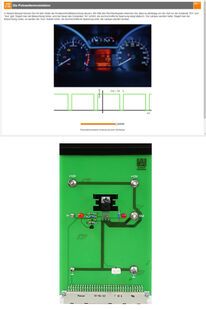Course: Pulse-width modulated signals in automotive

The use of the so-called pulse width modulation (PWM) is an integral part of automotive technology. PWM is used to control actuators, e.g. in the area of engine management or in the passenger compartment, precisely and continuously. For this reason, the basic knowledge of every automotive mechatronics engineer includes how pulse width modulation works and its signal image, as well as diagnostics in the event of a fault.
Course contents:
- Knowing the principle of pulse-width modulation
- List use cases of PWM in automotive engineering
- Power matching with PWM
- Explain the difference between direct and pulsed current
- Measurement of PWM signal characteristics: frequency, amplitude, pulse-width (duty cycle), edge and signal shapes
- Identify control and working circuits
- Measurement of PWM signals
- Diagnosis of PWM-controlled components
- Course duration 3h
Includes:
- 1 Experiment card with FET amplifier and indicator LEDs
- Storage case
- Labsoft browser and course software